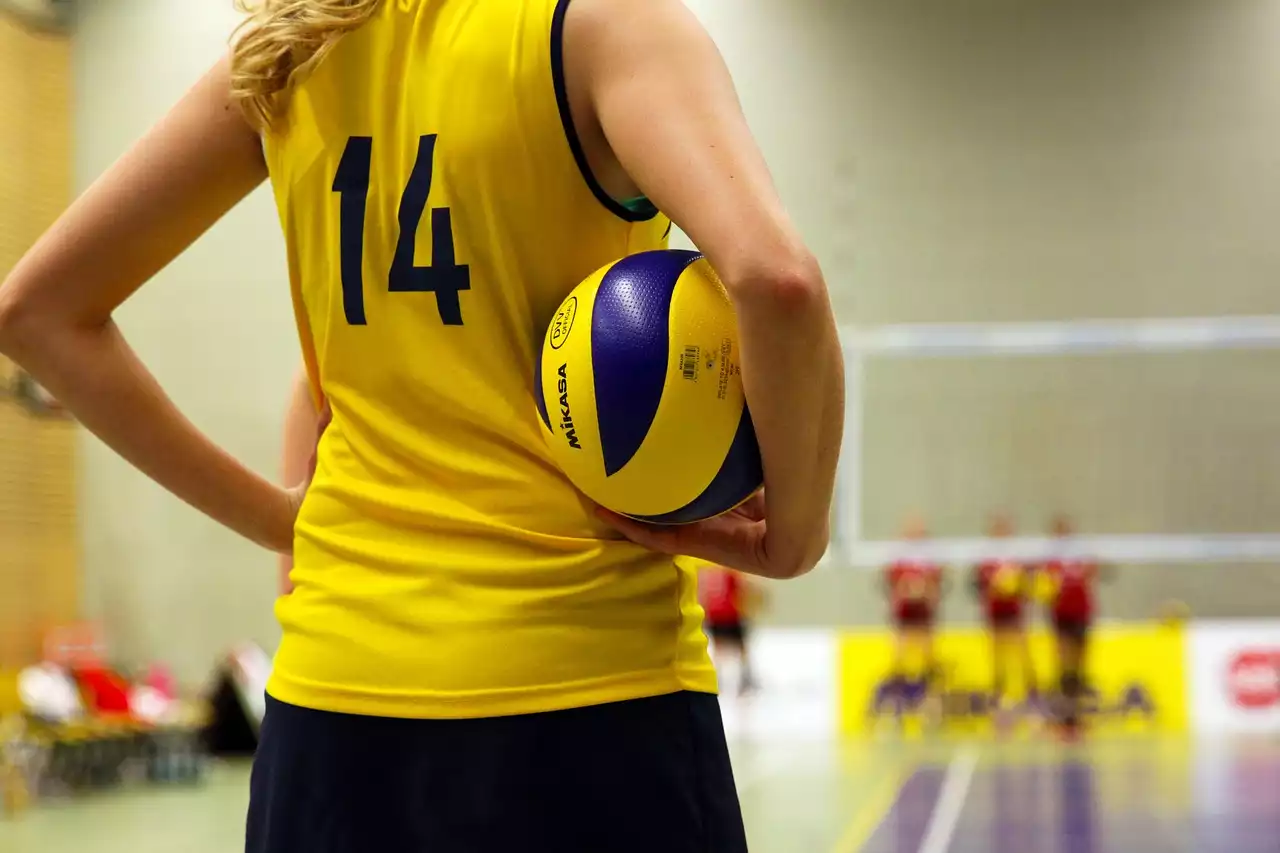What is a Volleyball?
A volleyball is a ball used to play the game of volleyball. It is typically made of leather, rubber, or synthetic material and filled with air. Volleyballs typically have a circumference of 65 to 67 centimeters (25.6 to 26.4 inches) and a weight of 260 to 280 grams (9.2 to 9.9 ounces). The shape of the ball is designed to make it easy to catch, pass, and spike.
The game of volleyball can be played indoors or outdoors. Indoor volleyball is usually played on a court with a net dividing the court into two halves. Outdoor volleyball is usually played on a beach or other sandy surfaces. The rules of each version of the game are slightly different, but the basic principles remain the same.
Types of Volleyballs
There are a variety of different types of volleyballs available, each designed for different skill levels and playing styles. Here is a look at the different types of volleyballs and the features they offer:
Indoor Volleyballs
Indoor volleyballs are designed for play on a court with a net dividing the court into two halves. These volleyballs are typically made of leather, rubber, or synthetic material and filled with air. Indoor volleyballs are designed to be durable and provide a consistent bounce. They are usually slightly heavier than beach volleyballs, making them easier to control when playing indoors.
Beach Volleyballs
Beach volleyballs are designed for play on a beach or other sandy surfaces. These volleyballs are made of a softer material than indoor volleyballs, making them easier to control in the sand. Beach volleyballs are usually slightly lighter than indoor volleyballs, allowing them to move more quickly through the air. They are also designed to be waterproof, allowing them to withstand the elements of outdoor play.
Recreational Volleyballs
Recreational volleyballs are designed for recreational play and are usually made of a softer material than competition volleyballs. They are typically lighter than competition volleyballs, making them easier to control for novice players. They are also designed to be more affordable than competition volleyballs, making them a great choice for players just starting.
Competition Volleyballs
Competition volleyballs are designed for competitive play. They are typically made of a harder material than recreational volleyballs and filled with higher-pressure air. This makes them more durable and provides a more consistent bounce. Competition volleyballs are typically more expensive than recreational volleyballs, making them a better choice for seasoned players.
Pros and Cons of Different Volleyballs
Each type of volleyball has its advantages and disadvantages. Here is a look at the pros and cons of the different types of volleyballs:
Indoor Volleyballs
Pros:
- Durable and provide a consistent bounce
- Easier to control when playing indoors
Cons:
- Heavier than beach volleyballs, making them more difficult to control on the sand
- Not waterproof, making them susceptible to damage from water or moisture
Beach Volleyballs
Pros:
- Softer material makes them easier to control in the sand
- Lighter than indoor volleyballs, allowing them to move more quickly through the air
- Waterproof, allowing them to withstand the elements of outdoor play
Cons:
- Softer material makes them less durable than indoor volleyballs
- More expensive than recreational volleyballs
Recreational Volleyballs
Pros:
- Softer material makes them easier to control for novice players
- Lighter than competition volleyballs, making them easier to control for novice players
- More affordable than competition volleyballs
Cons:
- Softer material makes them less durable than competition volleyballs
- Less consistent bounce than competition volleyballs
Competition Volleyballs
Pros:
- Harder material makes them more durable than recreational volleyballs
- Higher-pressure air provides a more consistent bounce
- More expensive than recreational volleyballs, making them a better choice for seasoned players
Cons:
- Harder material makes them more difficult to control for novice players
- More expensive than recreational volleyballs
How to Choose the Right Volleyball
Choosing the right volleyball for you depends on your skill level and playing style. Beginners should look for a softer material and lighter-weight volleyball, such as a recreational volleyball. More experienced players should look for harder material and higher-pressure air volleyball, such as a competition volleyball. It is also important to consider the type of court you will be playing on. Indoor volleyballs are best for indoor courts, while beach volleyballs are best for outdoor courts.
Volleyball Accessories
In addition to the ball itself, there are a variety of volleyball accessories available to help improve your game. These include gloves, knee pads, and protective eyewear. Gloves help improve your grip on the ball and protect your hands from blisters. Knee pads help protect your knees from abrasions and other injuries. Protective eyewear helps protect your eyes from any stray balls or other debris.










